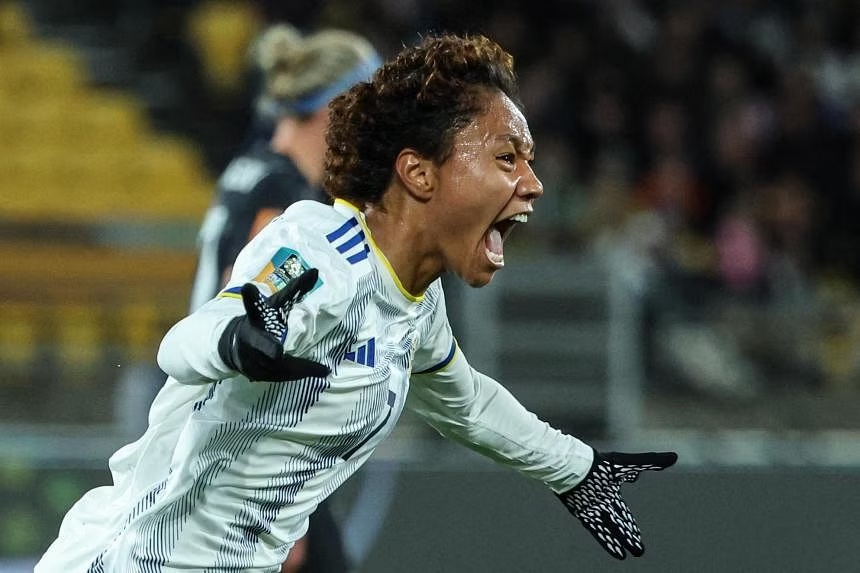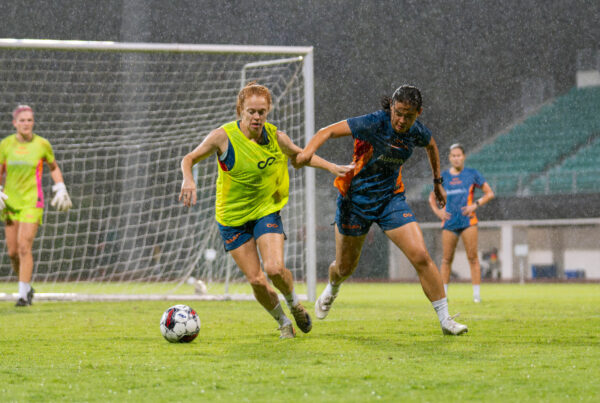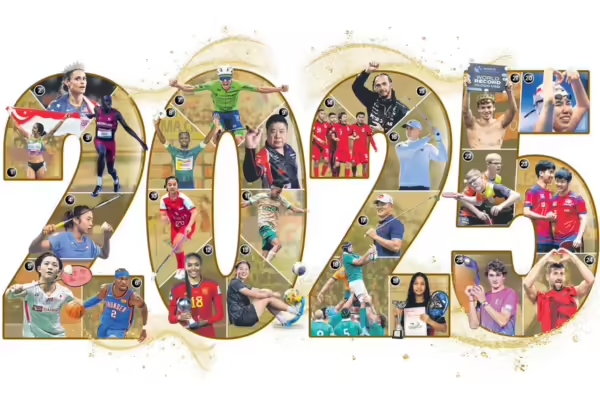Taken from source: https://www.straitstimes.com/sport/skill-stars-and-no-diving-for-girls-everywhere-the-cup-is-a-gift
Desperation infects every move. Defiance lives in every tackle. Quinley Quezada of the Philippines tugs a shirt. Hannah Wilkinson of New Zealand rises for a cross. The clock ticks, a post is hit. Sport is at that exquisite place where skill meets tension.
In Wellington, 32,357 watch. In Dortmund, 18,500km away Danelle Tan watches the highlights. Great sport travels far. Later when I ask Tan, 18, a Singaporean who is making history by playing for Borussia Dortmund, why people should watch this World Cup, she references this match.
“Let me flip the question,” she says. “Why shouldn’t they watch? It’s football at the end of the day. The game is still the same. Highs and lows. The thrill and the tears. People should stop looking at it as women’s football or men’s football.
“It’s football.”
Sara Merican, who was last called up to the national football team in 2021, is watching this Cup for the same reasons she watches the men’s. To see “athletes at the top of their game pursuing excellence”.
For the first 18 matches I keep count. Three red cards, 37 yellow, 35 goals, 502,673 fans. It’s tough, uncompromising football, mostly shorn of cheap theatrics. So much to achieve, so little time for diving.
Girls imitate what they see growing up and Merican says: “When I was learning the game, I didn’t see people flopping around. Even teammates would say, ‘play on’.” Tan tells me she heard of a player, it turns out to be Germany’s Sophia Kleinherne, who says, “I don’t know of any female Neymar. I don’t know any female player who stays down for two or three minutes”.
In the Antipodean cold you can feel the heat of struggle. “Competition,” says Merican, comes first. Everyone’s here for the winning. And yet this isn’t men’s football, so blase about fame, fans and adoring TV cameras. Here there’s a sense of sisterhood.
Merican saw it when she was in America, and in Korea, this understanding that “we’ve been through the same path of suffering, the misogynistic comments, had our passion for the sport challenged”. Everyone wants victory, but the “common goal is we want our sport to rise in prominence”.
In 2015, Merican remembers being elated during the Cup finals but sensed a muted response around her. Now the game has a voice and a visibility and you can hear the pride in her tone. “The benches have more support staff, the stands are way more full. It’s a wonderful moment to be part of.”
It’s been a long struggle, and an unfinished one. In England in 1920, 53,000 fans came to see the Dick, Kerr Ladies play the St Helens Ladies. Then a male boot stepped on hope. The next year the Football Association banned women from FA-affiliated grounds. The ban lasted 50 years.
Ugliness has been met with resilience. A boy might grow up dreaming of fat cheques, a girl just to play and find respect. The New York Times asked players at the 2019 Cup “What’s the biggest sacrifice you’ve made to play soccer?” and one answered, “To stay hungry so I can save money for my transport to training, so that I can play soccer”.
Now there is a sense of a sport flowering, of fans coming, TV paying attention, parents protesting less, a game spreading. The Philippines is at a World Cup and so are Vietnam, Panama, Haiti. Tan speaks passionately not just of salaries rising – she cites Keira Walsh’s record transfer to Barcelona last year for £400,000 (S$685,000) – but also of a game altering.
“The US,” she says “dominated with back-to-back wins (2015, 2019) but you can see Spain, the UK, Germany have become more physical to match the US. It’s more competitive, the gap has closed and it adds to the suspense.”
There is so much skill on this planet which we don’t adequately acknowledge. Squash strains to find constant attention. Wrestling lurks in the shadows. Television is choosy about what it shows and prime time is congested. Men’s football had made itself into a weekly addiction, but this is the time of women.
From this Cup will come stories but also a thing little girls need. Athletes who look like them. Globally, women’s sport has tennis players as role models, a clutch of gymnasts, a handful of swimmers but it needs more. Or as Merican puts it, “A world with a wider vocabulary of female players we can look up to and learn from and probably share more similarities in play with”
In the first Cup in 1991, 12 teams came. Now there are 32, which means hundreds of studded boots together kicking down doors to opportunity. The more players are seen, the finer they shine, the greater the effect. “It’s good,” says Tan, “for (young girls) to know there are female footballers out there. This is where the dream starts. To know if you really want it, there is a path. In the past it wasn’t even an option”.
So much, beyond entertainment, always feels at stake when women play. Forbes ran a story in November 2022 titled “The Fastest-Growing Audiences On TV Are For Women’s Sports” and football will want to surf this wave. Goals will be scored this Cup but also little, lovely, unseen victories forged. Like a girl in Manila asking her mother this week for a gift she’d never thought of before.
“Boots.”



